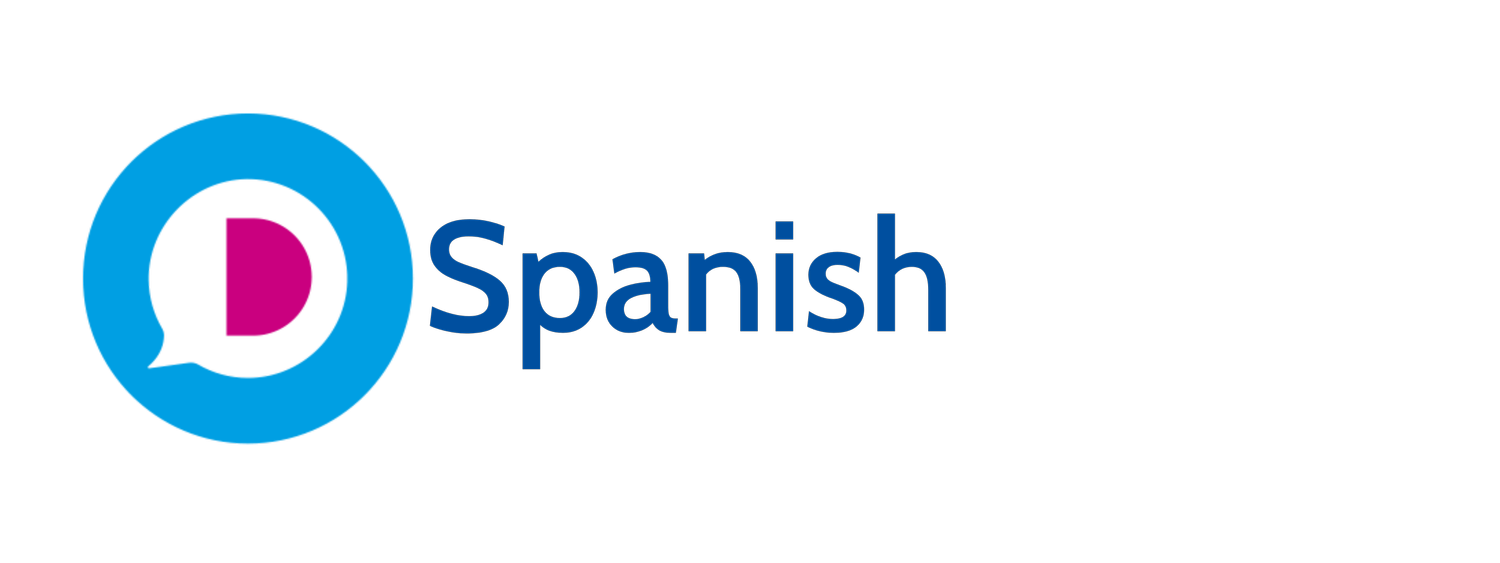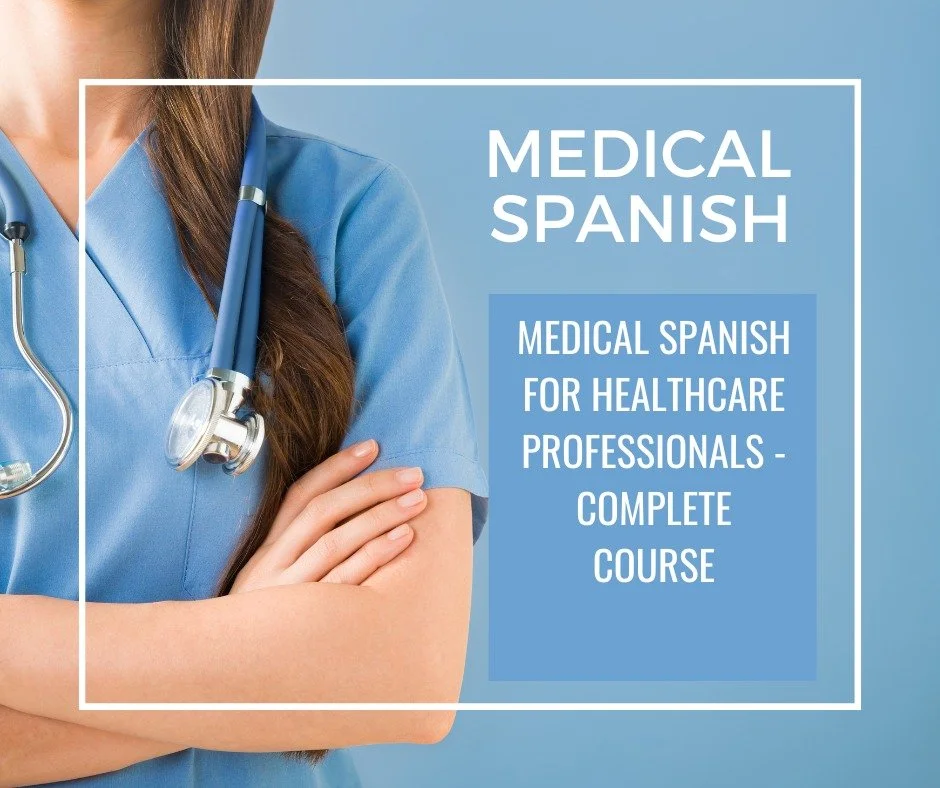Medical Spanish for Healthcare Professionals
Learn to connect with your Spanish-speaking patients. Start from zero or improve your Spanish with lessons tailored for real hospital and clinic situations.
For doctors, nurses, and healthcare professionals. Learn exactly what you need for medical contexts.
No commitment required—just meet your instructor, see the method, and experience the course before you decide.
-
Language barriers are one of the biggest challenges in healthcare. If you work with Spanish-speaking patients, you know how frustrating it can be to take a medical history, explain a diagnosis, or give clear instructions without a common language.
This course is designed to help you break that barrier. By the end of the program, you will be able to:
Take patient histories in Spanish.
Explain symptoms and diagnoses clearly.
Give instructions for treatment and follow-up care.
-
This course is open to all healthcare professionals who interact with Spanish-speaking patients — whether you are starting from zero or already have experience with Spanish and want to take your medical communication to the next level. It is especially valuable for:
Doctors and Specialists who need to take patient histories, explain diagnoses, and give treatment instructions in Spanish.
Nurses and Nurse Practitioners (NPs) who interact daily with patients in clinical or hospital settings.
Physician Assistants (PAs) who support medical teams and require clear, effective communication.
Medical Students and Residents preparing for rotations or clinical practice in areas with large Hispanic populations.
Other Healthcare Staff (therapists, paramedics, administrative staff in clinics and hospitals) who play a role in patient care and need basic Spanish communication skills.
With a focus on real-life doctor–patient interactions, this course is ideal for professionals with no prior Spanish knowledge who want to gain practical language tools to use immediately in their medical practice
-
Live Online Classes via Zoom
Interactive sessions with a flexible schedule, designed for busy healthcare professionals. Each class includes guided practice, medical role-plays, and real-life communication scenarios.Included in the Course
Access to course videos, essential practice materials, a medical glossary PDF, class recordings, interactive role-plays, and a collaborative online whiteboard available 24/7.Optional Textbook Purchase
Students may choose to purchase the textbook, An Introduction to Medical Spanish (Robert O. Chase), which provides access to additional interactive exercises and practice activities online.
-
With years of experience teaching Spanish to doctors, pharmacists, and nurses, I understand the real communication challenges healthcare professionals face with Spanish-speaking patients. My students include practicing physicians and healthcare workers in the United States who continue learning with me long-term.
The course is built on top-quality textbooks developed by specialists from leading U.S. universities, combined with practical role-plays and real-life medical scenarios to ensure effective, hands-on learning.
-
The course includes 24 live classes via Zoom. You decide the pace: book your lessons at the times that best fit your professional schedule. Because the schedule is flexible, the total duration of the course depends on how often you take your classes — some students finish in just a few months, while others spread it out over a longer period.
-
We want to make learning Spanish accessible while also giving you the best value for your investment. That’s why we offer two flexible ways to join the course:
Complete Course (20 classes): The recommended option. This package includes the full program, all materials, and ensures you get the most out of your learning experience.
Monthly Plan: A more flexible way to start, perfect if you prefer to try the course without a long-term commitment. You can choose one, two, or three classes per week.
Upgrade Anytime: If you begin with the monthly plan, you can later switch to the complete package at a discounted rate.
This way, you can start in the way that best fits your schedule and goals — and still have the opportunity to access the full program when you’re ready.
-
Unit 1
Goals: Learn how to introduce yourself as a healthcare professional, greet patients formally, and begin a consultation.
Content: greetings, professional titles, polite expressions, use of usted, phrases for opening a medical encounter.
Unit 2
Goals: Ask about a patient’s general condition and understand simple responses.
Content: vocabulary for emotions and physical states, common expressions for wellness and discomfort, descriptive adjectives.
Unit 3
Goals: Elicit symptoms and listen to the patient’s description of a problem.
Content: basic symptom vocabulary (pain, fever, cough), describing intensity and duration, clarifying questions.
Unit 4
Goals: Handle administrative interactions in a medical office or clinic reception.
Content: personal information (name, birth date, address, insurance), appointment scheduling, common administrative questions.
Unit 5
Goals: Talk about the patient’s family and its role in health care.
Content: family vocabulary, asking about companions, family medical history, cultural aspects of family involvement.
Unit 6
Goals: Give and understand instructions regarding medication.
Content: drug names, dosage and frequency, side effects, vocabulary for prescriptions.
Unit 7
Goals: Discuss nutrition and give dietary recommendations.
Content: food vocabulary, dietary restrictions, eating habits, culturally sensitive ways to suggest dietary changes.
Unit 8
Goals: Guide a patient through a physical exam.
Content: body parts, commands for positioning and movement (lie down, breathe deeply), reassuring expressions.
Unit 9
Goals: Obtain details about accidents or specific incidents.
Content: past tense structures, vocabulary for emergencies, precise questioning strategies.
Unit 10
Goals: Collect a complete medical history.
Content: chronic and common illnesses, past surgeries, allergies, current treatments, frequency and duration expressions.
Unit 11
Goals: Communicate during hospital stays, dental visits, and in conversations about mental health.
Content: hospital vocabulary, routines, basic dental terms, mental health concerns (anxiety, depression), culturally sensitive questioning.
Unit 12
Goals: Address reproductive health, pregnancy, and preventive care.
Content: pregnancy stages, delivery, contraception, infection prevention, culturally appropriate language around sexuality.
Additional Resources
Spanish alphabet and pronunciation guide.
Overview of irregular and stem-changing verbs.
English–Spanish and Spanish–English glossaries.
Answer key for exercises.
Real Words, Real Students
What You Get with the Course
Every lesson is designed to be practical, flexible, and focused on real communication. When you join, you’ll receive:
Live online sessions via Zoom with a native teacher.
Role plays and conversations based on real medical scenarios.
Expert-backed materials (text, videos, audios) inspired by university-level medical Spanish resources and tailored for real clinical interactions.
Access to the online platform with exercises for self-study.
Downloadable materials to review anytime.
Flexible scheduling with easy rescheduling options.
PLANS & PRICING
24 live 60-minute classes per month via Zoom
Flexible scheduling
Medical glossary PDF
Class recordings
24/7 collaborative online whiteboard
Access to 12 medical scene videos (consultations, hospital interactions, etc.)
Optional textbook
4 live 60-minute classes per month via Zoom
Flexible scheduling
All digital materials
whiteboard access
Class recordings for review
Access to 12 medical scene videos (consultations, hospital interactions, etc.)
Optional textbook
8 live 60-minute classes per month via Zoom
Flexible scheduling
All digital materials
whiteboard access
Class recordings for review
Access to 12 medical scene videos (consultations, hospital interactions, etc.)
Optional textbook
FAQs
-
No. This course is designed for all levels, including complete beginners and advanced learners who want to focus on medical vocabulary.
-
It is ideal for doctors, nurses, and other healthcare professionals who want to communicate better with Spanish-speaking patients.
-
The pace is flexible. You can schedule your classes according to your availability.
-
Yes, you can stop taking classes at any time. Please note that full payments cannot be refunded.
-
Yes. We offer a 15-day full refund guarantee if you are not satisfied.
-
All classes are private, one-on-one with the instructor.
-
Yes. You’ll have access to digital resources, including videos and practice activities, to support your learning.
-
The course is based on a professional textbook. Buying it is not mandatory, but it is highly recommended to make the most of the lessons.
-
You can book classes at times that work best for you, within the available schedule.




